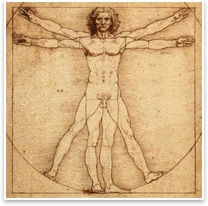The 10:20:30 Rule
The management strategy for design professionals
by Michael Strogoff, AIA
Strogoff Consulting
 Summary: Over the years, management gurus have proffered advice about how best to streamline operations, improve quality, build morale, and increase profits. What began with advice as simple as “time is money” grew into expensive consulting industries led by MBAs and best-selling authors. While many of their management theories—reengineering, TQM, ISO2000, Value Stream Mapping, Six Sigma—helped manufacturing and Fortune 500 companies, most design firms dismissed them as too difficult and time-consuming to implement. Even “softer” management theories such as William Deming’s Fourteen Points of Management and Steven Covey’s Seven Habits of Highly Effective People seemed to lack relevancy to design professionals. Summary: Over the years, management gurus have proffered advice about how best to streamline operations, improve quality, build morale, and increase profits. What began with advice as simple as “time is money” grew into expensive consulting industries led by MBAs and best-selling authors. While many of their management theories—reengineering, TQM, ISO2000, Value Stream Mapping, Six Sigma—helped manufacturing and Fortune 500 companies, most design firms dismissed them as too difficult and time-consuming to implement. Even “softer” management theories such as William Deming’s Fourteen Points of Management and Steven Covey’s Seven Habits of Highly Effective People seemed to lack relevancy to design professionals.
Architecture firms—which must balance technical knowledge with creativity, marketing with client management, and profitability with design exploration—needed a simpler business strategy that appealed to a wide mix of personalities. Hence, my management strategy developed specifically for design professionals: the 10:20:30 Rule. One needs no more than third grade math skills to understand it. The name, consisting of numbers, will appeal to project managers. And designers will love its inherent rhythm, which corresponds to a subset of the Fibonacci sequence. Here's how it works:
Fire your 10 percent worst clients each year. Yes, even in an economic downturn, firms fare better without demanding, unappreciative, slow-paying, or litigious clients. Successful firms work with successful clients. And although it is often time-consuming and expensive to obtain new clients, retaining bad clients requires even more time, energy, and expense.
Every year, evaluate each active client. Do they embrace good design and value your advice? Do they share your vision? Do they treat your staff with respect? Do they make timely decisions and honor their commitments? Here’s my prediction: weeding 10 percent of your clients each year will improve your profitability, design performance, staff retention, quality control, and every other yardstick of success more than any other action you take.
Replace the bottom 20 percent and reward the top 20 percent of your employees and consultants. Do it like clockwork each year, no exceptions, until only stellar employees and consultants remain, resulting in a simple meritocracy. For architects, as with other professional service businesses, people are the most valuable, and expensive, asset. Establish high expectations, reward those capable of achieving them, and move the rest aside.
The first to go should be your high-maintenance employees—the ones who consume inordinate amounts of energy, alienate other staff members, and divert your energy away from strategic activities. Next, consider those not interested in sharing knowledge and helping others succeed. Successful firms create cultures of knowledge sharing and leverage the collective capital of employees. Anyone not on board belongs elsewhere.
Likewise, mentor and reward your 20 percent best-performing employees each year. These are your stars, your future leaders, and most important contributors to your firmwide goals. Among this top group are leaders who place greater emphasis on your firm’s long-term success and sustainability than on the interests of any specific individual, including their own.
The same holds true with your project consultants. Continuously upgrade your stable of engineers, specialty consultants, and advisors by rewarding your top performers with repeat work and by replacing the bottom 20 percent each year.
Focus on the 30 percent most and least successful projects. This is where you will learn your most valuable lessons about what to replicate and what to avoid on a wide variety of topics: marketing decisions, negotiations, project management, staffing, delegation, client management, technology, quality control, etc. At each project milestone, assemble your team and candidly evaluate what worked well that is worth replicating throughout your practice, and what lessons to avoid on future projects. Then, publicize these lessons learned throughout your firm. Don’t spend time analyzing the middle 40 percent; there are few lessons to be learned from these projects.
Conclusion
Even under the best of circumstances, architecture is a difficult business. With the 10:20:30 Rule, you continuously upgrade your client base, focus on your firm’s long-term sustainability more than on the welfare of specific individuals, and transform your firm into a knowledge-sharing and ongoing learning environment—all without expensive consultants and years of implementation.
| 

 Summary:
Summary: